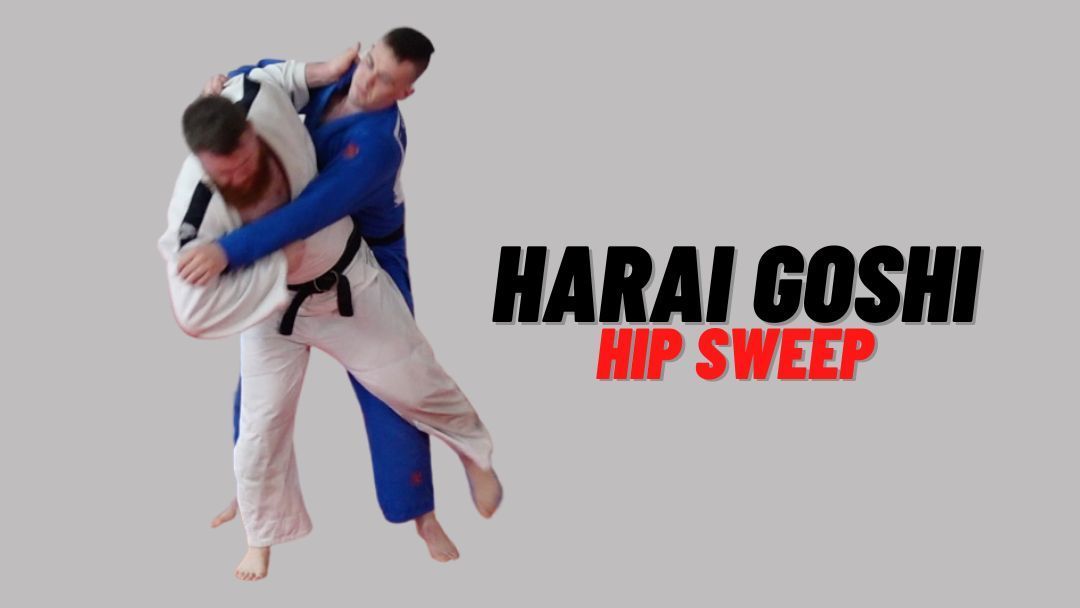Judo Talent, Kuzushi Magic, or Mechanics?
They say the best throws feel like flying. But stand mat-side during randori and you’ll hear the truth — a sharp slap, a breathless grunt, and the stunned silence that follows a perfect Harai Goshi. That’s not magic. That’s mechanics.
Harai Goshi isn’t just a beautiful technique — it’s a high-wire act of physics, biomechanics, and millisecond timing. It’s the kind of throw that makes you question whether raw power has ever really mattered in judo at all.
Let’s break it down.
In this NotebookLM podcast, we take an in-depth look at the judo technique known as Harai Goshi, or hip sweep. One source presents a biomechanical study analysing the forces and movements involved in executing the throw for both novice and advanced judoka. Another source offers a practical breakdown of the technique, detailing the grips, off-balancing, entry, and execution steps.
⸻
What Is Harai Goshi?
Harai Goshi (literally “hip sweep”) belongs to the Koshi Waza — judo’s suite of hip-based techniques. You pivot in, fuse bodies for a split second, and sweep the opponent’s leg with your own. But don’t be fooled: the sweep is dramatic, but the hip is the engine. As Riki Judo Dojo explains"
“harai is the sweep, goshi is the hip — it’s the hip that’s the throwing part.”
For a great visual breakdown, this instructional video by Shintaro Higashi gives a crisp explanation of body positioning and hip mechanics.
⸻
The Physics of Floating People
Harai Goshi isn’t brute force. It’s applied science. Here’s what’s really at work:
- Leverage – using your hip as a fulcrum
- Inertia & acceleration – converting your opponent’s momentum into rotation
- Center of gravity – shifting theirs over yours
- Ground reaction force – especially the horizontal kind. Ground reaction force (GRF) is the force the ground pushes back with when you push against it.
Pucsok et al. (2001) found that horizontal leg sweep velocity plays a primary role in Harai Goshi’s effectiveness. And advanced judoka generate significantly more horizontal ground reaction force than novices — that’s the real secret sauce. In Harai Goshi, you’re not just using your arms or hips — you’re also driving your leg across with force. But to sweep hard and fast, your supporting foot needs to push into the mat.
That push creates horizontal ground reaction force — the mat pushes back horizontally, helping you sweep through your opponent’s leg with power.
Translation: experts push sideways into the tatami, and the tatami pushes back — hard. That rebound force is what slices through the opponent’s leg. Think of it like skating on ice versus sprinting on rubber. One slips. One launches.
Further reading: Pucsok, Jozsef & Nelson, K & Ng, E. (2001). A kinetic and kinematic analysis of the Harai-goshi judo technique. Acta physiologica Hungarica. 88. 271-80. 10.1556/APhysiol.88.2001.3-4.9.
This video by The Judo Way of Life expands on this by showing five different setups to create optimal kuzushi and apply Harai Goshi against different opponents — a great way to see biomechanical principles in action.

⸻
Muscle is a Myth
Trying to muscle through Harai Goshi usually leads to “just kicking your opponent” (David Groom). The throw should be light, efficient, and fluid. It’s about coordination, timing, and body positioning — not raw power.
Further reading: Groom, D. (2024) Harai Goshi, Judo Way Of Life. Available at: https://www.thejudowayoflife.com/harai-goshi (Accessed: 23 March 2025).
This is why legends like Kano and Mifune didn’t rely on size. They understood positioning, timing, and trust in gravity. You can see this principle demonstrated beautifully in this tutorial on Harai Goshi by Samson Judo, which focuses on timing, flow, and leverage.

Takeaways for the Tatami
- Grip – Sleeve + high lapel grip
- Kuzushi – Pull them forward while rotating
- Entry – Your body connects with theirs; your sweeping leg goes up and outward, not around
- Execution – Use both hands to twist and draw them forward and down across your hip
This breakdown of two Harai Goshi variations by Shintaro Higashi is especially useful if you’re trying to fine-tune your entry and finish based on opponent posture and grip configuration.
⸻
Pay attention to the horizontal ground reaction force
Imagine you’re standing on a slippery floor. You try to sweep your leg sideways, but your other foot slips — no throw.
Now imagine you’re on grippy tatami — when you push sideways into the floor, it pushes back. That firm resistance lets you sweep hard and stay balanced. That’s horizontal GRF in action. Advanced judoka generate more horizontal ground reaction force because they:
- Push more decisively into the mat with their supporting leg
- Use that force to drive a faster, more effective leg sweep
That’s why the same technique looks sharper and hits harder when done by an expert — the floor is working with them.
Final Thought
To master Harai Goshi, don’t think about sweeping. Think about floating. About loading the wave, not paddling harder. Once the mechanics align — grip, hips, timing, floor — the throw becomes inevitable.
And when done right? Harai Goshi doesn’t feel like throwing someone. It feels like catching them mid-air — and letting the earth finish the work.
Quiz: In the execution of Harai Goshi, which biomechanical factor is most critical for generating an effective throw?
A. The strength of the sweeping leg
B. The speed of the hip rotation
C. The horizontal ground reaction force generated during the sweep
D. The vertical lift provided by the arms
Answer
Correct Answer: C. The horizontal ground reaction force generated during the sweep
Explanation: The research emphasizes that advanced judoka generate significantly more horizontal ground reaction force during the leg sweep, which is a key factor in the effectiveness of Harai Goshi.
(1) Pucsok, Jozsef & Nelson, K & Ng, E. (2001). A kinetic and kinematic analysis of the Harai-goshi judo technique. Acta physiologica Hungarica. 88. 271-80. 10.1556/APhysiol.88.2001.3-4.9.
(2) Groom, D. (2024) Harai Goshi, Judo Way Of Life. Available at: https://www.thejudowayoflife.com/harai-goshi (Accessed: 23 March 2025).
(3) Katagiri-Adamcik, R. (2023) Harai-Goshi Tips | Riki Judo Dojo, YouTube. Available at: https://www.youtube.com/watch?v=1qdr_NEP0wM (Accessed: 24 March 2025).





Member discussion: